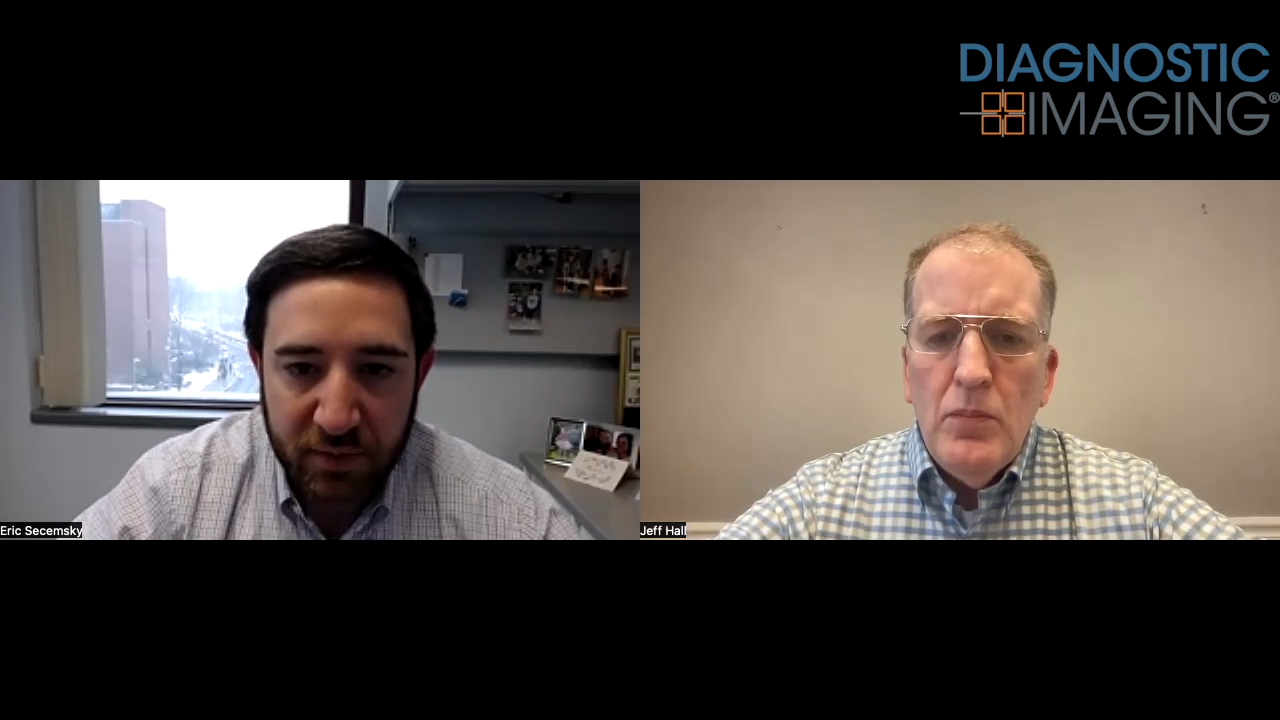Report from ARRS: Image-guided biopsy helps patients hang onto their kidneys
Image-guided percutaneous biopsy is safe and accurate, and it holds potential for eliminating needless nephrectomies, according to two studies presented at the American Roentgen Ray Society meeting in Vancouver.
Image-guided percutaneous biopsy is safe and accurate, and it holds potential for eliminating needless nephrectomies, according to two studies presented at the American Roentgen Ray Society meeting in Vancouver.
Researchers in Michigan concluded that image-guided core-needle biopsy has a sensitivity rate of almost 98%, a low incidence of complications, and significant impact on patient management in the majority of cases.
There is a big need for this technique, according to Dr. Katherine Maturen, a radiologist at William Beaumont Hospital in Royal Oak, MI. Advances in CT and MR technology have led to increased detection of incidental renal masses, including very small lesions. Yet it may be difficult to differentiate benign from malignant masses with imaging techniques.
"How do we decide what to do with these patients? Biopsy is an option, but clinical acceptance of renal mass biopsy has been low," Maturen said.
Reluctance on the part of referring physicians is understandable. Older data using the fine-needle aspiration technique showed a low rate of accuracy for detection of malignancy and an unacceptably high rate of nondiagnostic studies. Reports on core-needle biopsy have been much more promising, however, with accuracy ranging from 89% to 100%.
"The core-needle biopsy technique is highly superior to FNA. There is a growing consensus regarding safety and efficacy of the core-needle technique for renal mass evaluation," she said.
Maturen's group performed a retrospective review of image-guided core-needle biopsies performed between February 1999 and July 2005. Biopsies were guided by ultrasound or CT. During the study period, 153 renal mass biopsies were performed in 126 patients. Lesions ranged in size from 1 to 13 cm.
The few complications overall included two hematomas that resolved spontaneously, and none were significant, Maturen reported at the ARRS meeting.
Of the 153 masses, 56% were judged malignant. The majority of these were confirmed at surgery, yielding a 97.7% sensitivity rate. Just 4% of biopsies were nondiagnostic.
The researchers also examined the effect of biopsy on patient management. The technique had a significant impact in 92 patients (62%), including malignant cases that went to surgery and benign findings that helped avoid surgery.
They estimated that as many as 75 unnecessary nephrectomies were avoided. Based on stability at follow-up imaging after one year, the researchers suspect specificity could be as high as 100%. Obviously, however, no surgical confirmation of benign lesions that were not surgically removed can be made. Follow-up data for some patients were not available for analysis.
At the ARRS meeting, radiologists at Massachusetts General Hospital also reported positive results with image-guided biopsy, through research done in close collaboration with urologists.
They performed a retrospective review of 407 focal renal mass biopsies performed on 377 patients from September 1997 to February 2005. Size data were available for 340 cases, of which 241 lesions were smaller than 4 cm.
Wherever possible, radiologists performed combined FNA and core-needle biopsy. Most procedures were guided by CT (86%). Another 13% had ultrasound guidance, and both modalities were used in tough cases (1%).
Biopsy yielded useful information that influenced patient management in 80% of cases, said Dr. Anthony Samir, a clinical fellow in radiology at Massachusetts General Hospital. A high number of cases diagnosed as malignant were confirmed at surgery. There were, however, two false-positive diagnoses at biopsy, both of which were later diagnosed as atypical benign lesions. Nevertheless, image-guided biopsy had a positive predictive value of 98%.
Complications arose in 13 cases (3%), including large hematomas. None were serious enough to warrant overnight admission to hospital, and no biopsy-related deaths occurred.
"Biopsy of focal renal lesions has a low rate of complications and a high positive predictive value for diagnosis of renal malignancy. It has potential to decrease the rate of nephrectomies of benign lesions," Samir said.
Lesions determined benign on biopsy are being followed, so the negative predictive value cannot be ascertained at this time.
"We demonstrated that positive predictive value for diagnosis of malignancy is very high. We have not demonstrated negative predictive value for diagnosis of benignity. Out of several hundred cases, none have come back to bite us yet. But these tumors grow slowly. Research is very much a work-in-progress, despite seven years' history with biopsies. We need further research on the outcome of patients with negative biopsies, but our initial results are very encouraging," Samir said.
The Reading Room: Racial and Ethnic Minorities, Cancer Screenings, and COVID-19
November 3rd 2020In this podcast episode, Dr. Shalom Kalnicki, from Montefiore and Albert Einstein College of Medicine, discusses the disparities minority patients face with cancer screenings and what can be done to increase access during the pandemic.
What New Research Reveals About Novice Use of AI-Guided Cardiac Ultrasound
April 4th 2025In a study recently presented at the American College of Cardiology (ACC) conference, researchers found that novice use of AI-guided cardiac ultrasound after an AI-enabled electrocardiogram increased the positive predictive value for reduced left ventricular ejection fraction (LVEF) or aortic valve stenosis by 33 percent.










